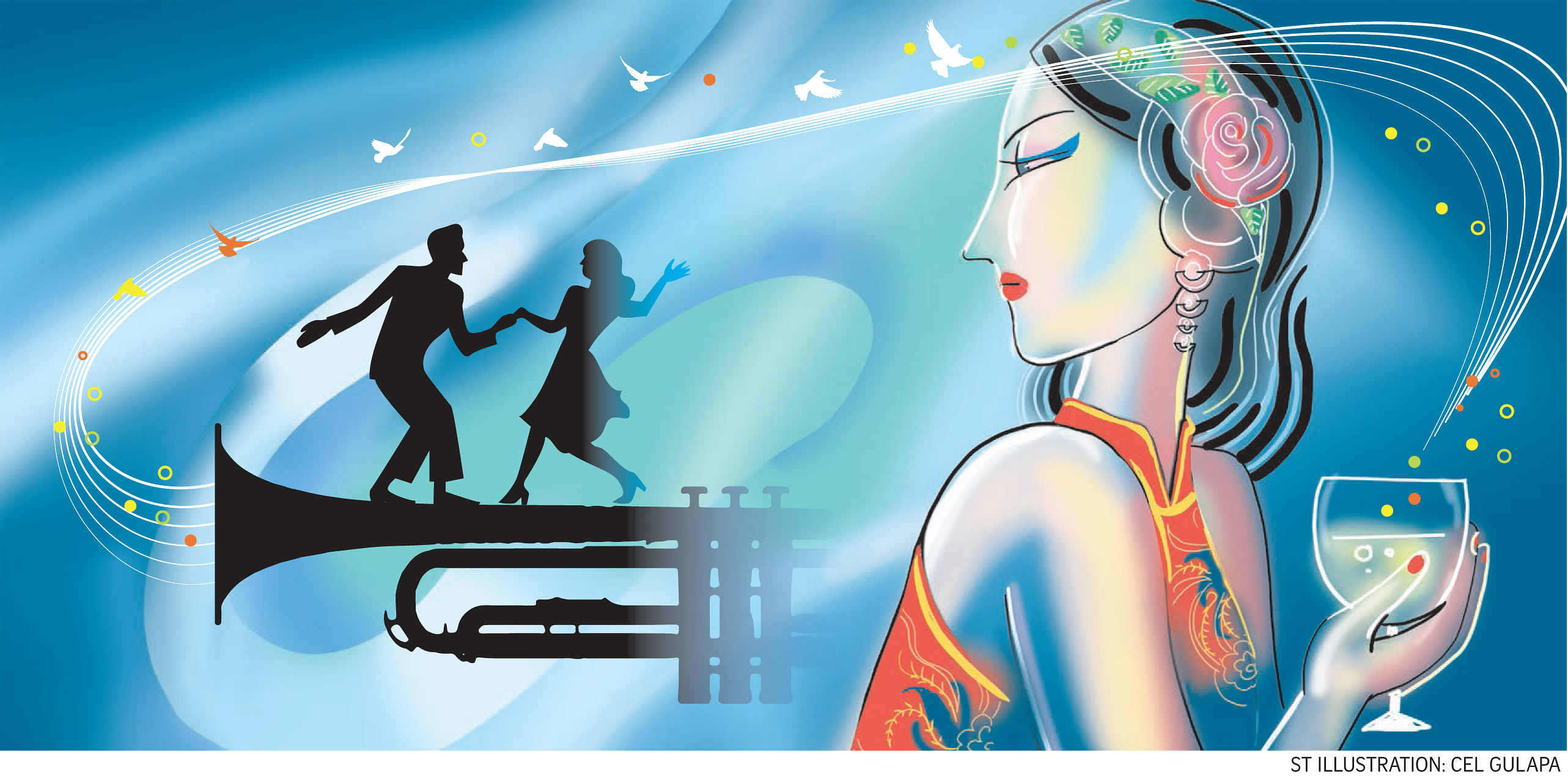We are once more living in the Roaring Twenties.
It gives me a thrill to say that because the 1920s was the first historical decade I was obsessed with and it boggles the mind that a whole century has passed since that golden age of Art Deco, flappers and all that jazz.
I fell in love with the 1920s because of the musical Chicago, in which a vaudeville star and an upstart chorus girl wind up in prison for murder and somehow translate criminal notoriety into celebrity.
I was fascinated by its strange, delicious language: "I know a whoopee spot/where the gin is cold but the piano's hot."
The cheongsam, a fashion I came to adore, rose to prominence in 1920s Shanghai. Chinese socialite and style icon Oei Hui-lan turned heads in defiance of decorum by slashing her cheongsam to the knee.
In secondary school, I devoured books by F. Scott Fitzgerald and Ernest Hemingway. The girls in Fitzgerald's stories all seemed to shimmy at glittering parties while dropping arch bon mots.
I could not wait to turn 20 and be told I was the spirit of youth and beauty by every man I met, like a Fitzgerald flapper.

If it went badly, I would fall back on tragic simplicity, like in Hemingway's 1926 novel The Sun Also Rises. "We could have had such a damned good time together," I would say, sadly but very stylishly. "Isn't it pretty to think so?"
2020 is, coincidentally, the last year of my 20s. It takes a hard right after that, older colleagues keep assuring me mournfully.
In his 1931 essay Echoes Of The Jazz Age, Fitzgerald reminisces about the 1920s, when "every day in every way grew better and better... and it seemed only a question of a few years before the older people would step aside and let the world be run by those who saw things as they were - and it all seems rosy and romantic to us who were young then because we will never feel quite so intensely about our surroundings any more".
The wild jubilation of the 1920s is infectious even a century on.
People had just lived through one world war and had no inkling there would ever be another nor that the boom of their decade would end with the 1929 Wall Street Crash that started the Great Depression. They were alight with change and mad for the future.
I wish I could say I were mad for the future in 2020, but mostly, I am alarmed. I fret about technological disruption. I am dismayed by divisiveness in society. I try to reconcile the urgent need to do something about the climate crisis with the grim thought that nothing I do as an individual will make a difference.
2020. Here we finally are. I find there is so much uncertainty and insecurity involved in contemplating one's own time - the "unthinkable present", as science-fiction author William Gibson would say - that I like to do it through the filter of history. Thus, the 100-year throwback.
But nostalgia can be a flawed, even dangerous way to think about things.
In the 2011 film Midnight In Paris, a modern-day screenwriter finds himself transported to the 1920s, where he meets famous figures, including his idols Hemingway and Fitzgerald. He falls in love with Pablo Picasso's muse, but she is enamoured of another era - the Belle Epoque of the previous century - and he realises everyone longs for an earlier golden age, whatever the present has to offer.
I love thinking about the 1920s from the vantage point of 2020, but I have realised I would never leave the latter to live in the former.
The 1920s had its own share of horrors. For example, there was the 1921 Tulsa Race Riot in Oklahoma, in which white residents attacked an affluent African-American community dubbed "Black Wall Street".
It was one of the worst outbreaks of racial violence in American history, yet little is known about it.
l learnt about it only last year because it features in the opening scene of the HBO television series Watchmen and its effects resonate through the show's alternate version of history, all the way to the racially charged present.
The 1920s are often associated with a wave of feminism, as women in many countries gained the right to vote.
In Singapore, a restriction on male immigrants led to the influx of female ones, many of whom found work and financial independence as samsui women and amahs.
But although progress was made in schooling for girls, many parents still considered educating their daughters a waste of money.
It was also still legal to buy young girls from poor families, known euphemistically as "mui tsai" ("little sister" in Cantonese), as slaves.
It is funny what you take from an era you never lived in. What draws me to the 1920s are not lived experiences, but cultural trappings, easily imported to my own time.
I can listen to all the speakeasy music I fancy on Spotify - or even Justin Bieber's 2015 hit Love Yourself reimagined by music collective Scott Bradlee's Postmodern Jukebox as a 1920s New Orleans jazz number.
I can sip gin at the Art Decoinspired Atlas Bar in Bugis while reading Fitzgerald's Flappers And Philosophers - the gilded Penguin edition I bought at Shakespeare & Company, a reincarnation of the Paris bookshop where Hemingway, James Joyce, Ezra Pound and other literati once gathered.
All this is thanks to my 21st-century technology, education and opportunities.
It helps me try to wrap my head around the notion of the passing of a century, which is so enormous that I have trouble conceiving of it against my own slender lifespan and friable human sense of time.
I wonder what people 100 years down the road will make of our age.
In 2120, will there be art retrospectives on memes? Will TikTok dance challenges join the ranks of the gavotte, Charleston and the Mashed Potato? Will people collect vintage AirPods like we do gramophones?
Or will we be remembered for our borders and intolerance, for our indifference in the face of an escalating climate crisis?
Writer Gertrude Stein referred to Hemingway and his peers as the "lost generation", left aimless, reckless and disillusioned by war.
I hope we are not remembered as the generation that lost the future.
We are once more living in the Roaring Twenties and I want to live in these times with the best of the past, but without turning away from the worst of the future.
Else someday I'll look back and think, oh, 2020. We could have had such a damned good time together. Isn't it pretty to think so?

